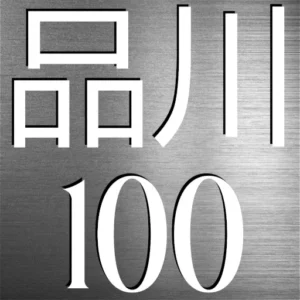Daidai Kagura – The Sacred Dances of Shinagawa-jinja
Among the many festivals and rituals held at Shinagawa-jinja, none are as quietly profound—or as enduring—as the Daidai Kagura (太太神楽). These sacred Shinto dances have been passed down for generations, preserving a spiritual performance tradition that dates back over 450 years.
Designated a Tokyo Intangible Folk Cultural Property, Daidai Kagura blends masked performance, rhythmic music, and elegant choreography into a ceremonial offering for the kami. It’s not a show—it’s a living ritual.
🕇 A Ritual Dance with Samurai Roots
The origin of Daidai Kagura at Shinagawa-jinja traces back to the Genki era (1570–1573). A historical record notes that the dances were performed in 1600 as an offering to Tokugawa Ieyasu on the eve of the Battle of Sekigahara. At the time, they were performed by the shrine’s priests.
Later, the tradition was inherited by kagura master Mamiya. In 1963, the performances were designated a Tokyo intangible cultural property. Since 1972, they have been kept alive by the Shinagawa-jinja Daidai Kagura Preservation Society, composed of passionate local volunteers.
🎭 Daidai Kagura Dances and Their Meanings
The original repertoire included 20 dances. Today, 12 dances are still performed. Each carries deep cultural and symbolic meaning:
- Shihōhai (四方拝): Pays homage to the four directions — North, South, East, and West.
- Inari (稲荷): A prayer to the god of rice and agriculture for a good harvest.
- Okina (翁): Features a mask of an old man symbolizing wisdom and longevity.
- Iwatō (岩戸): Depicts the myth of sun goddess Amaterasu hiding in a cave and the world’s darkness.
- Hanashizume (花鎮): A floral-themed dance celebrating the peace and fleeting beauty of flowers.
- Tenōgi (天扇): A dancer performs with a heavenly fan, symbolizing divine grace.
- Hakken (八剣): A dynamic dance involving eight symbolic swords.
- Saiwai-kae (幸替): A ritual for switching misfortune with blessings — a dance of fortune change.
- Yatenko (矢天狐): Tells the story of a fox who shoots an arrow into the sky — mystery and magic.
- Yakumo (八雲): Depicts the tale of “eight clouds” in ancient mythology.
- Seihakuhō (青白幣帛): Represents offerings of blue and white cloth to the deities.
- Saruta-no-mai (猿田の舞): Tells the tale of Sarutahiko, the god of crossroads and guidance.
The musical accompaniment includes seven compositions performed by a three-person ensemble: Ryūteki flute, Ōbyōshi hand drum, and taiko drum. Movements are slow and deliberate, preserving the ancient character of kagura performance.
- Uchinagashi (打ち鳴らし)
- Emumai (恵牟舞)
- Yorimoshi (良武志)
- Shinagawa Byōshi (品川拍子)
- Kamakura Byōshi (鎌倉拍子)
- Mitsu Byōshi (三ツ拍子)
- Hayashinagawa (早品川)
The music is played by a trio: Ryūteki flute, Ōbyōshi hand drum, and large taiko drum. Both the musical tempo and choreography are purposefully slow, preserving the ceremonial atmosphere of Japan’s older kagura styles.
🗓️ When to the Daidai Kagura
Today, Daidai Kagura is performed four times annually:
- January – Saitan-sai (New Year’s Ritual)
- April – Spring Festival
- June – Reitai-sai Grand Festival
- November – Niiname-sai (Harvest Ritual)
Performances are typically held at the shrine’s kagura-den (神楽殿), an open wooden stage used exclusively for sacred music and dance.
📍 Visitor Information
Address: 3-7-15 Kita-Shinagawa, Shinagawa-ku, Tokyo 140-0001
Best time to visit: During seasonal festivals (January, April, June, November)
Admission: Free
Official Info: https://shinagawajinja.tokyo/
There are four performances of Daidai Kagura annually, during the New Year’s festival, the spring festival, Reitai-sai festival, and the harvest festival. It is recognized as an intangible folk cultural property of Tokyo.
Until the Taisho period, Shinto priests were the dancers, but now they are from a preservation society.
Where is it?
| what3words | ///shopping.downward.petted |
| latitude longitude | 35.6179177 139.7379243 |
| Nearest station(s) | Shinbanba Station (Keikyū Main Line) Kitashinagawa Station (Keikyū Line) |
| Nearest public conveniences | Within the Shinagawa Shrine |
Show me a sign.

A triple sign shared with other Shinagawa-jinja spots.
Withervee says…
Not had a chance to see it. Places are limited apparently. But I’m told it isn’t loud or flashy — it’s slow, deliberate, and beautifully out of time. You’ll feel like you’re watching something from 400 years ago. Because you are.
Event Character
- Lifestyle 生活 (Seikatsu): ✔️
- Historical Significance 歴史 (Rekishi): ✔️
- Atmosphere/Natural Features 風土 (Fūdo): ✔️
Who in their right mind would vote for this?
- Local (Shinto) believers
- Preservation society members
- Fans of ritual dance
- Slow ritual enthusiasts
- Cultural heritage buffs
Further Info
Official Site
While you’re there…
Explore the Fujizuka, the sacred Dragon Spring, and the Double Dragon Torii — all within Shinagawa-jinja’s grounds. It’s a compact spiritual world in a quiet urban corner.

